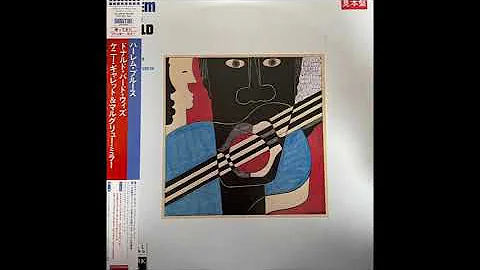Donald L Bartel
age ~86
from Ithaca, NY
- Also known as:
-
- Donald J Bartel
- Don Bartel
- Phone and address:
-
10 Quarry Rd, Ithaca, NY 14850
(607)2690523
Donald Bartel Phones & Addresses
- 10 Quarry Rd, Ithaca, NY 14850 • (607)2690523
- 69 Yellow Barn Rd, Freeville, NY 13068 • (607)8448562
Work
-
Position:Educator
Education
-
Degree:Graduate or professional degree
Isbn (Books And Publications)

Orthopaedic Biomechanics: Mechanics And Design In Musculoskeletal Systems
view sourceAuthor
Donald L. Bartel
ISBN #
0130089095
Us Patents
-
Self-Aligning Knee Prosthesis
view source -
US Patent:7105027, Sep 12, 2006
-
Filed:Jan 31, 2003
-
Appl. No.:10/356657
-
Inventors:Joseph D. Lipman - New York NY, US
Russell F. Warren - Greenwich CT, US
Thomas L. Wickiewicz - Franklin Lakes NJ, US
Timothy M. Wright - Stamford CT, US
Donald L. Bartel - Ithaca NY, US
Frank Hoffman - Prutting, DE
Christoph Fankhauser - Solothurn, CH
Daniel Delfosse - Bern, CH
Walter Supper - Bettlach, CH -
Assignee:Mathys Medical Ltd. - Bettlach
-
International Classification:A61F 2/38
-
US Classification:623 2029
-
Abstract:A prosthesis for repairing a knee is made with an insert sandwiched between a femoral component and a tibial tray. The parts are shaped so that both the femoral component and the tibial tray will slidingly interface with the insert during motion of the knee. At regions where the femoral component interfaces with the insert during extension and during an initial range of flexion of the knee, the femoral component's radius of curvature (R) for flexion rotation is larger than its radius of curvature (R) for varus/valgus rotation. In a preferred embodiment, the surface of the tibial tray is convex and spherically curved, and the insert is free to move in both the posterior-anterior direction and the medial-lateral direction with respect to the tibial tray.
-
Elbow Replacement Apparatus And Methods
view source -
US Patent:8613774, Dec 24, 2013
-
Filed:Nov 16, 2010
-
Appl. No.:12/947506
-
Inventors:Donald L. Bartel - Ithaca NY, US
Mark P. Figgie - Riverside CT, US
Robert N. Hotchkiss - Riverside CT, US
Joseph D. Lipman - New York NY, US
Darrick Lo - Greenbrook NJ, US
Timothy M. Wright - New York NY, US -
Assignee:New York Society for the Ruptured and Crippled maintaining the Hospital for Special Surgery - New York NY
-
International Classification:A61F 2/38
-
US Classification:623 2012, 623 2013
-
Abstract:Apparatus and methods for total elbow replacement are provided to allow a surgeon to intraoperatively select a linked or unlinked constraint by utilizing a connection located on the body of the ulnar and/or humeral stem. Additional modularity also allows the selection of a cemented or cementless stem as described herein. The modularity and adjustability provides a number of advantages.
-
Prosthetic Condylar Joints With Articulating Bearing Surfaces Having A Translating Contact Point During Rotation Thereof
view source -
US Patent:20110125275, May 26, 2011
-
Filed:Nov 16, 2010
-
Appl. No.:12/947572
-
Inventors:Joseph D. Lipman - New York NY, US
Donald L. Bartel - Ithaca NY, US
Timothy M. Wright - New York NY, US -
Assignee:NEW YORK SOCIETY FOR THE RUPTURED AND CRIPPLED MAINTAINING THE HOSPITAL FOR SPECIAL SURGERY - New York NY
-
International Classification:A61F 2/38
A61F 2/30
A61F 2/42 -
US Classification:623 2011, 623 2339, 623 1811, 623 2014, 623 2118
-
Abstract:A prosthetic joint according to the present invention includes a first implant component for attachment to a first bone and a second implant component for attachment to a second bone. The first implant component has a condylar portion that includes first and second condylar bearing surfaces and similarly, the second implant component has bearing surfaces that receive and are complementary to the first and second condylar bearing surfaces. Each of the first and second condylar bearing surfaces and each of the bearing surfaces of the second implant component has a cross-section in a coronal plane that exhibits two different radii and a contact point is established between the first and second condylar bearing surfaces and the bearing surfaces of the second implant component. The bearing surfaces of the respective implant components are configured such that varus and valgus rotation of the first implant component relative to the second implant component causes the contact point to move outwardly.
-
Constrained Condylar Knee Device
view source -
US Patent:20110125279, May 26, 2011
-
Filed:Nov 16, 2010
-
Appl. No.:12/947474
-
Inventors:Joseph D. Lipman - New York NY, US
Donald L. Bartel - Ithaca NY, US
Timothy M. Wright - New York NY, US -
Assignee:NEW YORK SOCIETY FOR THE RUPTURED AND CRIPPLED MAINTAINING THE HOSPITAL FOR SPECIAL SURGERY - New York NY
-
International Classification:A61F 2/38
-
US Classification:623 2027, 623 2035, 623 2032
-
Abstract:A knee joint prosthesis includes a femoral component having a first condylar bearing surface and a second condylar bearing surface. Each of the first and second condylar bearing surfaces has a cross-section in a coronal plane that exhibits at least two different radii. The prosthesis also includes a tibial component and an insert component associated with the tibial component. The insert component has bearing surfaces that are complementary to the first and second condylar bearing surfaces, wherein a contact point is established between the bearing surfaces of the insert component and the first and second condylar bearing surface. In accordance with the present invention and as a result of the above construction, varus and valgus rotation of the femoral component relative to the insert component causes the contact point to move laterally as the knee is rotated. By shifting the contact pointy laterally/outwardly, the knee stability (i.e., stiffness) gradually increased.
-
Joint Prosthesis
view source -
US Patent:57024588, Dec 30, 1997
-
Filed:Feb 2, 1995
-
Appl. No.:8/383757
-
Inventors:Albert H. Burstein - Longboat Key FL
Donald L. Bartel - Freeville NY -
Assignee:New York Society for The Ruptured and Crippled Maintaining The Hospital
for Special Surgery - New York NY -
International Classification:A61F 238
-
US Classification:623 20
-
Abstract:A knee joint prosthesis comprises femoral and tibial components. The femoral component includes a pair of condyles each curved generally to match the shape of an anatomical femoral condyle. The surface of each condyle is defined by (a) anterior posterior radii R. sub. CF and R. sub. CE, wherein R. sub. CF is the radius of curvature Of that portion of the condyle which is weight bearing in flexion and R. sub. CE represents that portion of the curvature of the condyle which is weight bearing in extension, and (b) a medial lateral radius R. sub. CML. The tibial component includes a pair of concavities, each of which is adapted to receive one of the condyles of the femoral component. The surfaces of the concavities are defined by an anterior posterior radius R. sub. TAP and a medial lateral radius R. sub. TML. The foregoing radii are selected to optimize the balance between range of motion and knee longevity.
-
Hip Joint Prosthesis
view source -
US Patent:44083599, Oct 11, 1983
-
Filed:Apr 7, 1981
-
Appl. No.:6/251883
-
Inventors:Albert H. Burstein - Greenwich CT
Donald L. Bartel - Freeville NY -
Assignee:New York Society for the Relief of the Ruptured and Crippled,
Maintaining the Hospital for Special Surgery - New York NY -
International Classification:A61F 104
-
US Classification:3 1912
-
Abstract:A total hip joint prosthesis has a ball, replacing the ball of the hip joint ball and socket, affixed to the femur by a stem. Stem stress is reduced by providing a rounded cross-section of the stem truncated along the lateral side in the critical section subject to greatest cyclic loading. The stem is of controlled low flexibility so that when the bone cement and stem composite structure is in place, the bone is subject to a maximum percent of normal stress from bending moments. By virtue of the truncated shape and its size relative to the bone cavity, stress in the stem is minimized when the stem alone carries the load.
-
Femoral Prosthesis For Total Hip Replacement
view source -
US Patent:47784750, Oct 18, 1988
-
Filed:Nov 10, 1987
-
Appl. No.:7/120737
-
Inventors:Chitranjan S. Ranawat - Alpine NJ
Albert H. Burstein - Stamford CT
Donald L. Bartel - Freeville NY -
Assignee:New York Society for the Relief of the Ruptured and Crippled - New York NY
-
International Classification:A61F 232
-
US Classification:623 23
-
Abstract:A femoral component for a hip joint prosthesis comprises a proximal portion adapted to be received in the intertrochanteric region of a femur, a neck portion extending obliquely medially, anteriorly and superiorly from the proximal portion and adapted to be joined to a femoral head element, and a stem portion smoothly merging with and extending inferiorly from the proximal portion. The proximal portion has anterior and prosterior aspects that converge medially and inferiorly and intersect a rounded medial aspect oriented obliquely to the stem portion both anteriorly and medially, said aspects defining a generally wedge-shaped body adapted to engage the endosteal surfaces of the femur in the intertrochanteric region such that substantially all loads are transmitted from the component to the bone in the intertrochanteric region and load transfers through other surfaces are minimized.
Resumes

Donald Bartel
view source
Senior Scientist At Hospital For Special Surgery
view sourceLocation:
Ithaca, New York Area
Industry:
Hospital & Health Care
Youtube
Get Report for Donald L Bartel from Ithaca, NY, age ~86





